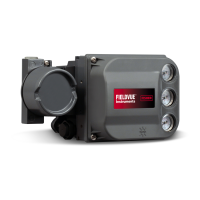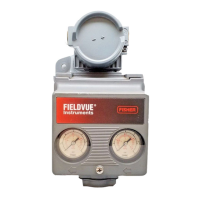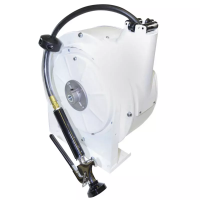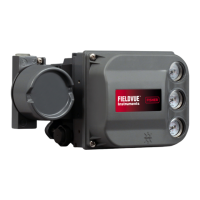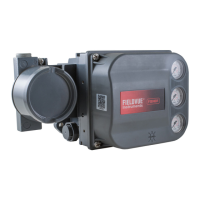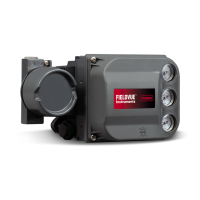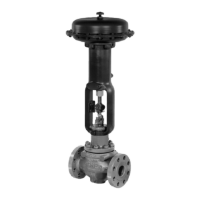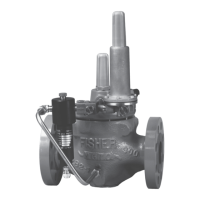Instruction Manual
D103176X012
Detailed Setup and Calibration
June 2017
28
6. The following message appears:
Use Increase and
Decrease selections
until the displayed
current matches the
target.
Press OK when you have read this message.
7. The value of the Analog Input appears on the display. Press OK to display the adjustment menu.
8. From the adjustment menu, select the direction and size of adjustment to the displayed value. Selecting large,
medium, and small adjustments causes changes of approximately 0.4 mA, 0.04 mA, and 0.004 mA, respectively. If
the displayed value does not match the current source, press OK, then repeat this step (step 8) to further adjust the
displayed value. When the displayed value matches the current source, select Done and go to step 9.
9. Place the instrument In Service and verify that the analog input displayed matches the current source.
Note
Analog Input Calibration can also be peformed using the Local Operator Interface, as decribed in the procedure below.
Using the Local Operator Interface to perform Analog Input Calibration
Refer to step 6 of the Local Interface Flow Chart on page 58 of this manual.
Connect a variable current source to the instrument +11 and -12 terminals. From the home screen, press the DOWN
(B) arrow key five times and then press the RIGHT (") arrow key. Acknowledge the warning if you are sure that you
want to proceed.
1. Adjust the variable current source to 4 mA.
2. Press the RIGHT (") arrow key
3. Adjust the variable current source to 20 mA.
4. Press the RIGHT (") arrow key.
If you want to keep this calibration, select SAVE AND EXIT. If you exit without saving, the last saved configuration data
will be restored.
Auto Calibrate Travel
1. The auto calibration procedure is automatic. It is completed when the Calibrate menu appears.
During calibration, the instrument seeks the high and low end points and the minor loop feedback (MLFB) and
output bias. By searching for the end points, the instrument establishes the limits of physical travel, i.e., the actual
travel 0 and 100% positions. This also determines how far the relay beam swings to calibrate the sensitivity of the
beam position sensor.
Adjusting the minor loop feedback bias is done around mid travel. The valve position is briefly moved back and forth
to determine the relay beam position at quiescence. Essentially, it establishes the zero point for the Minor Loop
Feedback circuit. The back and forth motion is performed to account for hysteresis.

